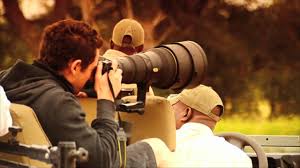
TRAVEL INFORMATION IN UGANDA AND RWANDA
August 14, 2019
PHOTOGRAPHIC SAFARIS
August 14, 2019RWANDA WEATHER
Planning to visit Rwanda for a safari but you are not sure what or how its weather is? Well, Rwanda is East African state which is bordered by Tanzania, Burundi, Uganda and the DR Congo. It is dubbed the Land of a Thousand hills due to its rolling hills and incredibly, straddling a stride equator hence offering the most ideal temperatures and ample rainfall throughout the year. This landlocked country features mainly tropical like type of climate which is characterized by frequent rain showers.
Its rainfall ranges from 1000 to 1400 mm each year depending on which part of the country. Kigali which straddles at altitude of 1500 meters receives about 950 mm of rainfall each year with its maximum in April and minimum from June to August. As you head off to the east to Akagera National Park which stands at elevation 1300 to 1400 meters and Lake Kivu, Butare, Ruhengeri and Nyanza do experience a bit low/cool temperatures. Temperatures range from 100-25 degrees Celsius. In montane areas of Volcanoes National Park, Nyungwe Forest National Park and Gishwati Mukura National Park, there is plenty of rainfall with moderate temperatures.
To the northeast, there is rainforest and the mean temperatures range within 75 degrees Fahrenheit in the lower mountains and much cooler 55 degrees Fahrenheit. Equally, Rwanda experiences 2 rainy/wet season and it is experienced from March to May and the second phase of it begins from October to November. However, in between the wet season, there is a short dry season which comes with some sunshine and light clouds. As well, the dry season also experience some light rainfall amount and heavy amount is received in areas near the equator due to high elevation. The wet season is usually ideal for birding.
Visitors on Rwanda safari can explore this particular part of Africa at any time of the year but the dry season is usually considered as the best time as it is characterized by dry season. This is perfect for visitors on mountain gorilla trekking safari in Volcanoes National Park. It usually kick starts from June to September and this is the longest dry spell while the short one begins from December to February. Given the kind of habitat in some parts of this country, you have to expect rains at any time of the day but what is important is that it can rain and afterwards, it stops and you proceed with your primate adventure.
What to pack for safari in Rwanda
To have a successful trip in Rwanda, a lot more needs to be considered. If it is gorilla trekking that you wish to take part then you need to put into consideration the following items-water proof hiking boots, gardening gloves, water proof day pack, walking stick (this is got at the park headquarters/lodge), insect repellents, rain jacket or poncho, camera with not flashlight, trousers, long sleeved shirts or t-shirts, hat and others.
Conclusively, think of a safari to Rwanda and take note of the two important seasons-the dry and wet season which equally are also experienced twice a year.


